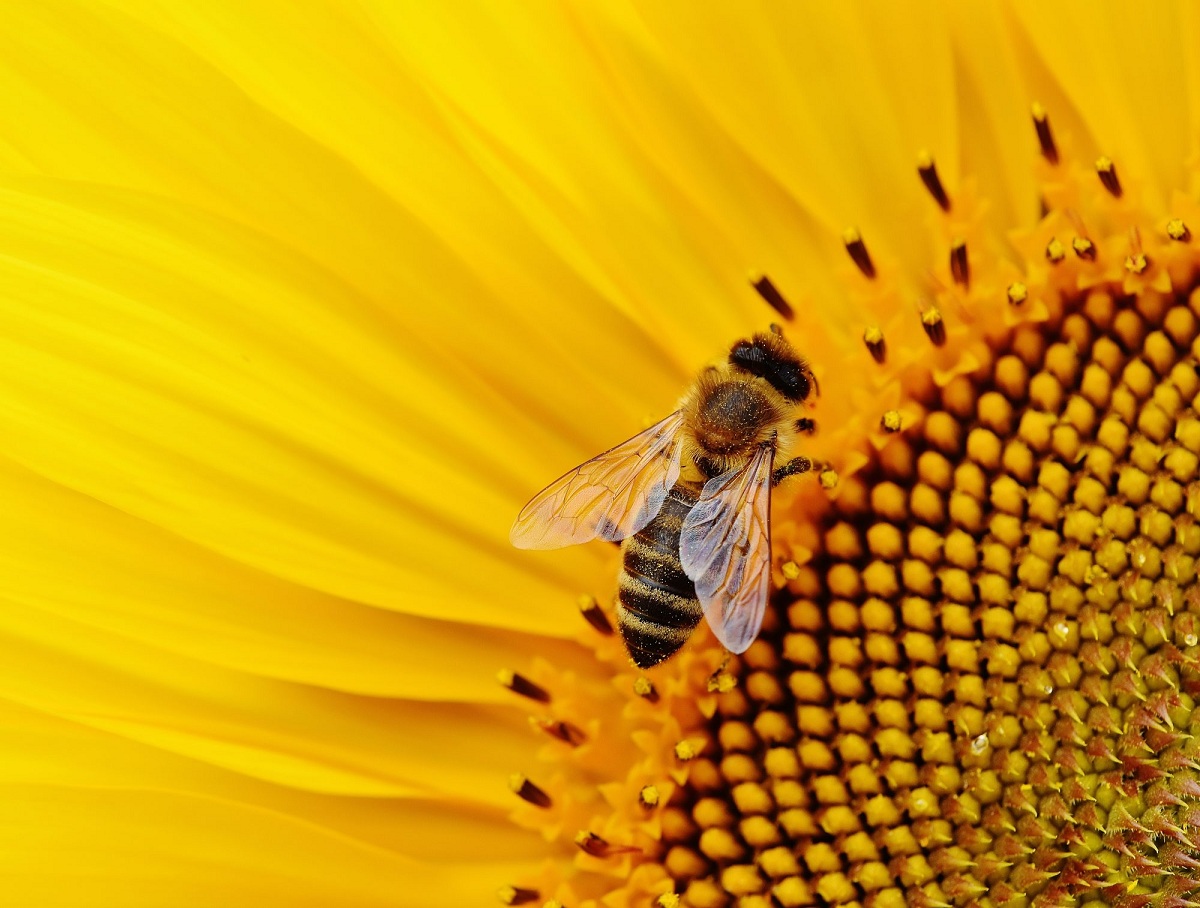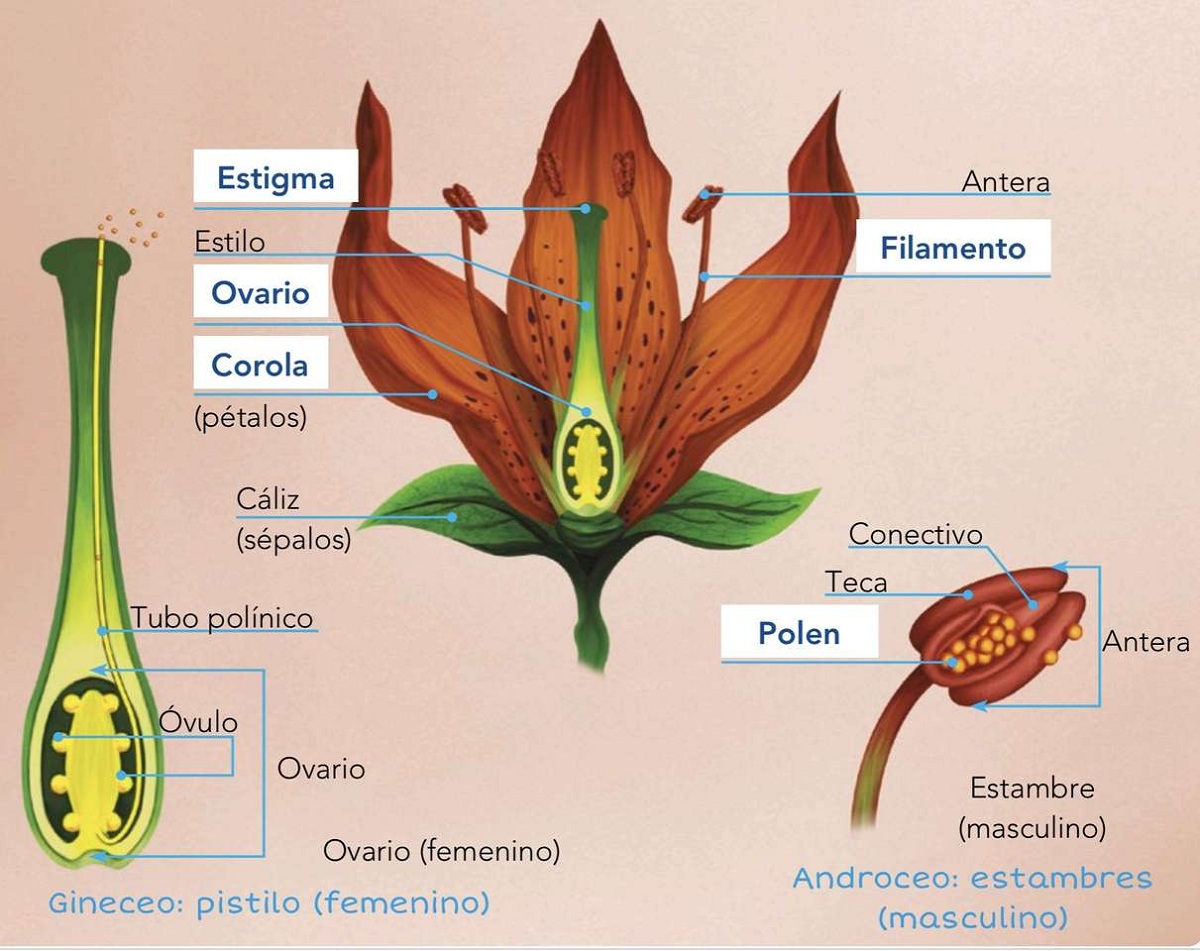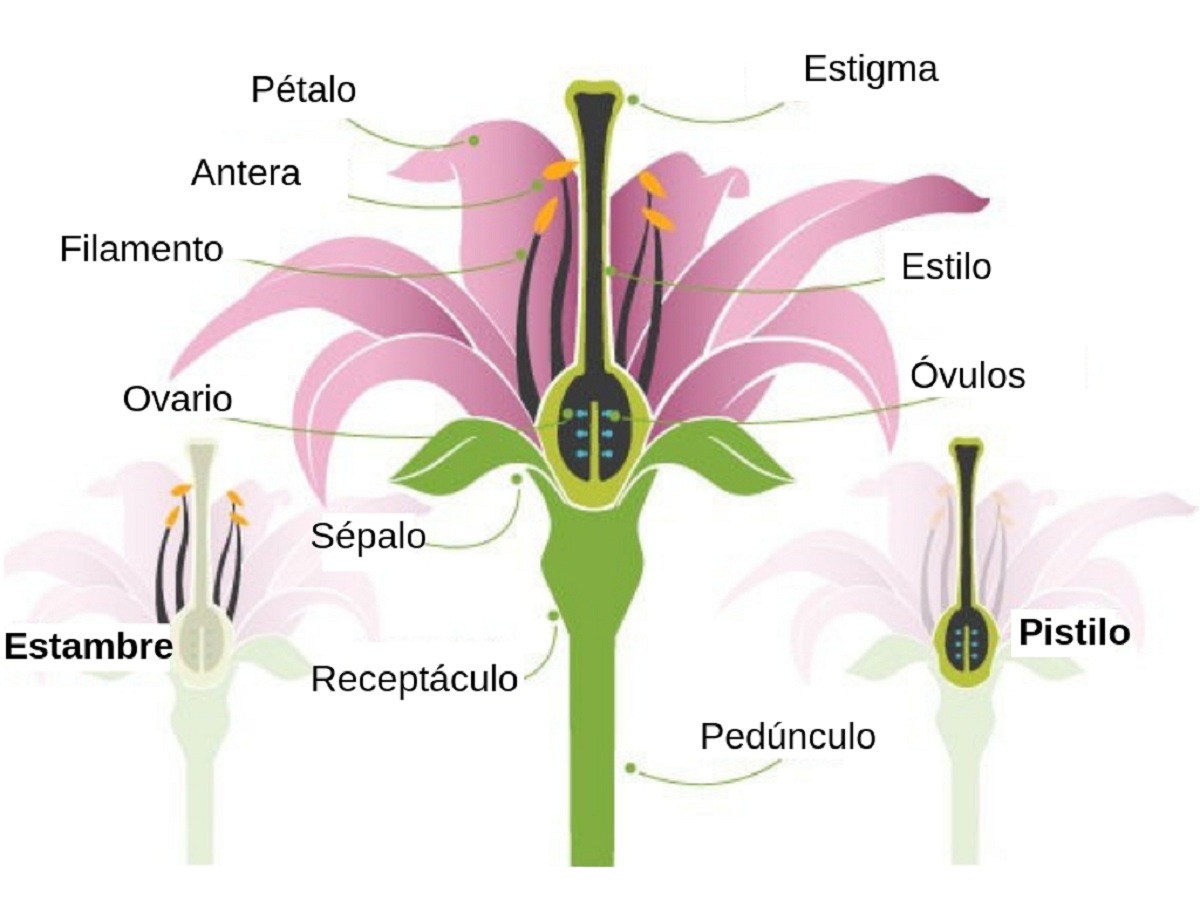
The most evolved plants belong to the group of spermatophytes. They include all those plants that produce seeds and generate flowers in the different parts of the plant. It is in the flowers that they house the reproductive structures. The different Parts of a flower They are those that develop the male and female gametes and it is where fertilization and seed production take place. In a flower there are also structures for protection and germination.
In this article we are going to decide between the parts of a flower and the function of each of them.
What is a flower

To be able to explain what a flower is and to be able to know all its functions, it is necessary to know what its definition is. The flower is a stalk of limited growth that develops normally at the ends of the leaves. The leaves are modified to have a reproductive function. All these structures are called anthophiles. Inside the anthophiles we go to the petals and sepals. Each of them has different parts and are specialized in one or more functions. Some of these functions are the formation of gametes, fruit and seed dispersal, pollination and other structures that serve to protect the flower.
We know that the main objective of plants is to spread and extend their area of distribution. Therefore, the flowers they play a fundamental role in the survival of the different species of spermatophyte plants. Not all flowers end up having reproductive success, so it depends on each species to have a greater or lesser number of flowers.
Parts of a flower

We are going to distinguish the different structures that a flower has in general. The parts of a flower can be divided mainly into two: on the one hand, we have those parts whose main function is reproductive and those that are not. The parts of a flower that do not have a reproductive function are called the perianth and are formed by the calyx. The chalice is made up of the following structures and all of them are sterile. These structures are as follows:
- Sepals: the sepals of a flower are those that are under the sins and serve as protective support.
- Corolla: the corolla is formed by the petals.
The parts of a flower that have a reproductive function are the following:
- Androecium: the androecium is formed by the stamens that are those that contain the pollen grains. Pollen is the male reproductive organ of a plant.
- Gyneceous: within the gynoecium we find the pistils with their carpels. Carpels are the female reproductive organs in a spermatophyte plant.
- Carpels: it is divided in turn into ovary, style and stigma.
Functions of the parts of a flower

Once we know what the parts of a flower are, we see that each of them is specialized in a specific function. Let's see what they are:
- Peduncle: it is what is known as the corner that supports the flower. It is not a part that is part of the pieces of the flower as such but it has a supporting function.
- Receptacle: It is also known by the name of floral felling. It is a widening of the Peduncle that serves to insert the antofilos. This part is also not part of the floral pieces.
- Chalice: It is the part of the flower made up of structures that are shaped like leaves. These structures are called sepals and have a generalized green color. The function of the calyx is to protect the flower bud.
- Corolla: is the part that is formed by certain structures that are leaf-shaped. They usually have different colors that vary depending on the specific species and are known by the name of petals. The petals are formed after the sepals during the growth and development of the flowers. The function of the petals is to pollinate. To do this, it uses its shapes and striking colors to attract the attention of pollinators. Among the most common pollinators we have insects such as bees.
- Androecium: It is the part of the flower that contains the male reproductive organs. These reproductive organs are called stamens. It is the male part of the flower and each stamen is made up of a filament at the end of which we find the anther. It is here that the male gametes are formed, which are the pollen grains.
- Gynecium: it is that part of the flower that has the female reproductive organs. It is known by the name of a pistil that is formed, in turn, by the carpels. Each carpel is divided into three parts. On the one hand, we have the ovary, which is the enlarged part where the ovum is located. The style is the elongated area between the ovary and the stigma. Finally, the stigma is the final part of the style and has a sticky structure whose main function is to capture and retain pollen grains for fertilization.
Types of flowers
We already know what the different parts of a flower are and, with this, we must know that there are different types of flowers. Although all of them belong to the group of angiosperms, they can be classified from different points of view. If we classify angiosperm plants by their reproductive part, we have those species that have male flowers that only have stamens and others that have female flowers with only pistils. There are some hermaphroditic flowers that have both reproductive organs and do not need other external specimens for their reproduction. You just need pollinators that can carry pollen grains from the male flower to the female.
We are going to classify the different types of flowers according to the floral structures they have:
- Full flowers: son those that consist of the 4 elements of a typical flower. An example of this is the rose.
- Incomplete flowers: they do not have these 4 elements. An example of this is begonia. This plant has stamens or pistils but never both. They are those flowers that have only one sex.
- Monocots: in these plants the flower develops on a single cotyledon that is the one that provides the seed. The leaves have only one parallel vein. Examples of this are lilies, orchids, tulips, crocuses, etc.
- Dicotyledons: the flower develops on two cotyledons provided by the seed. Examples of this are margaritas, nasturtiums and portulacas.
I hope that with this information you can learn more about the different parts of a flower and its characteristics.